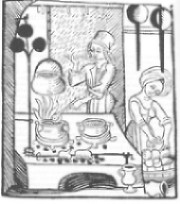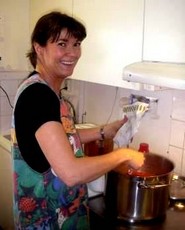 On a couple of occasions we’ve been asked about how to make gluten free baked products lighter (we understand that “door-stop bread loaves” are just not the fashion any more); and how to make your own self-rising flour for use in gluten free cooking.
On a couple of occasions we’ve been asked about how to make gluten free baked products lighter (we understand that “door-stop bread loaves” are just not the fashion any more); and how to make your own self-rising flour for use in gluten free cooking.
As is the case with all kinds of flours, the only difference between the “plain” and the “self-raising” flour, is that the self-raising has had chemical leavening agents (baking powder) added to it that causes it to rise (this process was first invented back in the mid-1800’s B.T.W.).
What You Need To Know About Baking Powder:
Typical quantities of baking powder used in a recipe would be as follows:
100grams of flour,
3 grams of baking powder
and just a pinch of salt (up to 1 gram).
The basic formulation for baking powder itself, varies, but it commonly contains sodium bicarbonate (an alkali) combined with a starch (to keep it dry) and some form of acid salts such as cream of tartar or certain aluminum salts. (Here is a LINK to ingredients used in common baking powders plus more fascinating info)
It’s the body’s excessive exposure to aluminum salts that are of BIG concern. These are usually found in what are called “double-acting” baking powders and should be avoided. Studies have presented compelling evidence of aluminum being directly linked with senility and Alzheimer’s, just to name a few. (Other aluminum-containing formulations are found quite commonly in underarm deodorants as well). (more…)
 When I first encountered customers with gluten intolerance or celiac, I had no problem (I thought) in understanding the issues that they had to deal with. The solution, it seemed to me, was simple enough. Just avoid the gluten containing foods.
When I first encountered customers with gluten intolerance or celiac, I had no problem (I thought) in understanding the issues that they had to deal with. The solution, it seemed to me, was simple enough. Just avoid the gluten containing foods.


 On a couple of occasions we’ve been asked about how to make gluten free baked products lighter (we understand that “door-stop bread loaves” are just not the fashion any more); and how to make your own self-rising flour for use in gluten free cooking.
On a couple of occasions we’ve been asked about how to make gluten free baked products lighter (we understand that “door-stop bread loaves” are just not the fashion any more); and how to make your own self-rising flour for use in gluten free cooking. 
